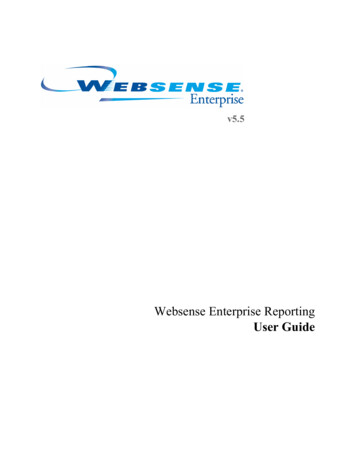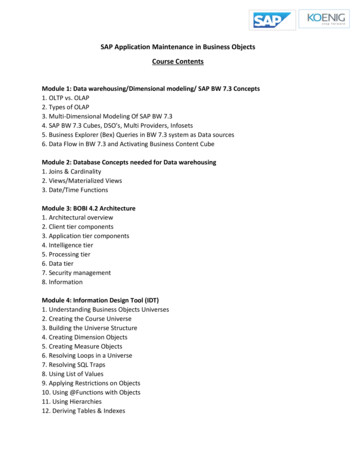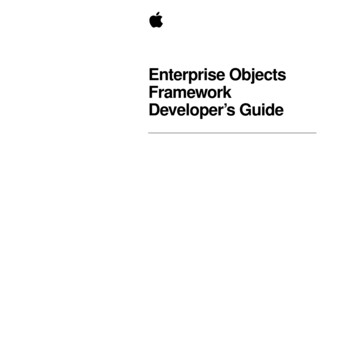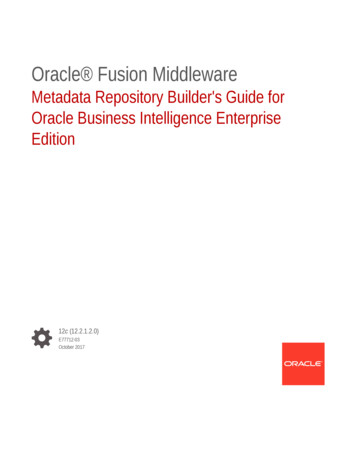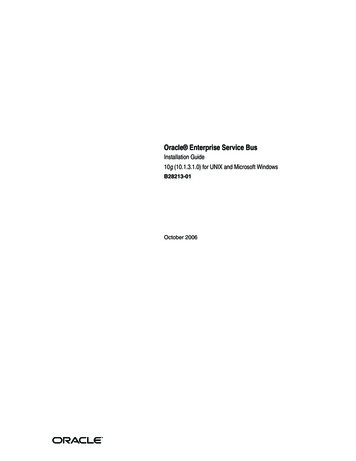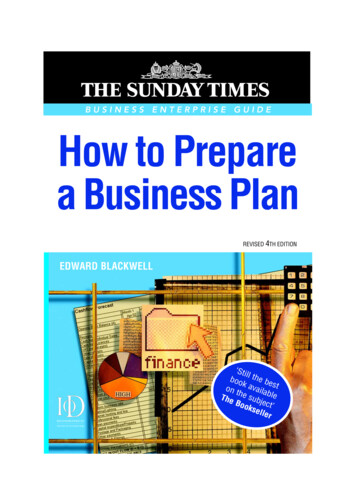
Transcription
BUSINESS ENTERPRISE GUIDEHow to Preparea Business PlanREVISED 4TH EDITIONEDWARD BLACKWELL‘Stilboo l the bekon t availa stbhThe e sub lejeBoockse t’llerRECOMMENDED BYI NST IT UT E OF D I R EC TORS
How to Preparea Business Plan
Other titles available from Kogan Page inThe Business Enterprise Guide series:Published in association with The Sunday Times and theInstitute of DirectorsThe Business Enterprise Handbook: A complete guide to achievingprofitable growth for all entrepreneurs and SMEs, Colin Barrow, RobertBrown and Liz ClarkThe Business Plan Workbook, Fourth Edition, Colin Barrow, Paul Barrowand Robert BrownThe Company Secretary’s Handbook: A guide to the duties and responsibilities, Third Edition, Helen AshtonThe Complete Guide to Selling Your Business, Second Edition, Paul S Sperryand Beatrice H MitchellThe Customer Service Workbook, Neville Lake and Kristin HickeyDo Your Own Market Research, Third Edition, Paul HagueE-Business for the Small Business: Making a profit from the Internet, JohnG FisherFinancial Management for the Small Business, Fifth Edition, Colin BarrowForming a Limited Company, Seventh Edition, Patricia ClaytonLaw for the Small Business, Eleventh Edition, Patricia ClaytonManaging People in a Small Business, John StredwickPractical marketing and PR for the Small Business, Second Edition, Moi AliRunning a Home-based Business, Second Edition, Diane BakerSelling by Telephone: How to turn business cold calling into hot profit,Fourth Edition, Chris de WinterStarting a Successful Business, Fourth Edition, Michael J MorrisThe Strategic Planning Workbook, Neville LakeSuccessful Marketing for the Small Business: A practical guide, FifthEdition, Dave PattenThe above titles are available from all good bookshops. To obtain further information,please contact the publisher at the address below:Kogan Page Limited120 Pentonville RoadLondon N1 9JNUnited KingdomTel: 44 (0) 20 7278 0433Fax: 44 (0) 20 7837 6348www.kogan-page.co.uk
BUSINESS ENTERPRISE GUIDEHow to Preparea Business PlanREVISED 4TH EDITIONEDWARD BLACKWELLLondon and Sterling, VA
Throughout the book ‘he’ and ‘she’ are used liberally. If there is a preponderance of themasculine pronoun it is because the inadequacies of the English language do not provide asingle personal pronoun suitable to refer to both sexes.This book has been endorsed by the Institute of Directors.The endorsement is given to selected Kogan Page books which the IoD recognises as being ofspecific interest to its members and providing them with up-to-date, informative and practicalresources for creating business success. Kogan Page books endorsed by the IoD represent themost authoritative guidance available on a wide range of subjects including management,finance, marketing, training and HR.The views expressed in this book are those of the author and are not necessarily the same as thoseof the Institute of Directors.First published in 1989, reprinted 1989Second Edition 1993, reprinted 1994, reprinted with revisions 1996Third Edition 1998, reprinted 1998Fourth Edition 2002, reprinted 2002, 2003Revised Fourth Edition 2004Apart from any fair dealing for the purposes of research or private study, or criticism or review, aspermitted under the Copyright, Designs and Patents Act 1988, this publication may only be reproduced, stored or transmitted, in any form or by any means, with the prior permission in writing ofthe publishers, or in the case of reprographic reproduction in accordance with the terms andlicences issued by the CLA. Enquiries concerning reproduction outside these terms should be sentto the publishers at the undermentioned address:Kogan Page Limited120 Pentonville RoadLondon N1 9JNwww.kogan-page.co.uk Edward Blackwell 1989, 1993, 1998, 2002, 2004The right of Edward Blackwell to be identified as the author of this work has been asserted byhim in accordance with the Copyright, Designs and Patents Act 1988.The views expressed in this book are those of the author, and are not necessarily the same as thoseof Times Newspapers Ltd.British Library Cataloguing in Publication DataA CIP record for this book is available from the British Library.ISBN 0 7494 4191 7Typeset by Jean Cussons Typesetting, Diss, NorfolkPrinted and bound in Great Britain by Creative Print and Design (Wales), Ebbw Vale
ContentsAcknowledgementsviiIntroduction11.Writing a business plan42.Simple cash flow forecasts183.The very small business344.Retail and catering605.Manufacturing836.Expanding a business1007.The market1138.Planning the borrowing1179.How not to write a business plan – or run a business127
viContents10. Maintaining the plan13411. Small business and the trade cycle14112. Monitoring progress14713. Where to go for further advice168Appendix 1: Help for small businesses172Appendix 2: Useful names, addresses and Web sites175Index182
AcknowledgementsIn preparing this revision of How to Prepare a Business Plan, I havehad even more help from my old friend Richard Hughes, FCA, ofEdwards, Chartered Accountants, of Walsall than for the last edition.He has been through the text to make sure, as far as possible, that allthe information that needed to be updated has been updated. His advicehas always been invaluable.In proffering a new section, on how to run a restaurant, I have reliedvery much on the advice and criticism of Steve Wakefield, who has,himself, demonstrated how to make a success of catering in an imaginative way.Throughout the history of this book, my wife, Hildegard, has beenthe arbiter and amender of the English, the spelling and the punctuation. Without her the book would never have got off the ground. I alsoremember with gratitude all my old colleagues who have helped mewith it so much in the past.
IntroductionStarting a new business venture is like going into a tropical forest on atreasure hunt. There are rewards to be won, both in material wealth andin personal satisfaction, but there are dangers lurking and you caneasily lose your way.This book is written not only to help you convince your financialbackers that you will succeed and come back with a bag of gold, butalso to help you write your own guidebook for the journey. The authorhas himself spent 40 years on foot among the trees, both in small business on his own account and as a guide and adviser to others.Before beginning work on your business plan or your cash flowforecast, you would do well to ask yourself two vital questions:What do you really want out of the business?The answer to this question will fall into two parts.The monetary rewards are obviously important. Set yourself atarget. If anything less than a million pounds would be a bitter disappointment, then a million is what you are aiming for. If anything above 200 a week would give you cause for a major celebration, put thatdown as your target.However, money is not all you are in business for. What else? Areyou a born ‘loner’, anxious to be free from the constraints of acompany set-up? Or someone with a yen to organise his own wellstructured corporation? Would freedom to design your own products
2How to prepare a business planmake your life worth living? Or do you just want to feel useful? Yourstrategy should reflect your own personal ends.Think, too, about the timescale. Are you determined to make a quickfortune and retire to la dolce vita or to a life of good works? Or,conversely, are you so fascinated by some aspects of what other peoplecall ‘work’ that you would happily carry on as long as there is breath inyour body?Just jotting down what you hope to achieve will have begun to giveshape to your plan. Next you must ask yourself questions about yourresources, both mental and material. Consider your temperament andthe talents you will bring to the business and how they will affect yourplanning.Are you an outgoing sort of person, able to get on with and influenceyour fellow men and women? If so, the marketing side of business –finding out what people want and selling it to them – is likely to beyour strong suit; but, with that same temperament, you may find youare not very happy or at your most efficient alone in an office andworking out costs or struggling with the books. You may not possess,either, the ‘toughness’ required to deal with employees who do notperform. You might decide, therefore, against trying to run aproduction-led business or saddling yourself with the bookkeeping.If you are the creative type but shy and inclined to worry, you woulddo well to base your business on design and innovation. Having to sellthe goods yourself would doubtless prove a trial, and the problems of aproduction line, controlling the stock, etc, could give you more sleepless nights than you would care to contemplate. Can you make a livingby selling your designs and inventions? If so, then concentrate onexploiting your undoubted talents to that end.In classical times the entrance to the temple of Apollo at Delphicarried the inscription ‘Know Yourself’. This admonition should betaken to heart by every business man and woman. Others may livehappily with illusions about themselves; the small business personcannot!The primary material resource you will want, of course, is money.Whether you need a few hundred pounds to start in business as a
Introduction3second-hand clothes dealer or a hundred thousand to set up a factory, itjust has to be there, and a good deal of it must be yours. In the verysmall business, a rough rule of thumb is that you (or your family andfriends) will have to produce half; and the other half is often very hardto come by. I believe that your chances of raising the extra finance willbe greatly improved if your business plan and cash flow forecast areprepared along the lines laid down in this book.What feature of your product or service will give you the allimportant edge over your competitors?Is your product or service:1.2.3.4.5.An entirely new idea?An improved version of something that already exists?Cheaper than the others?More reliable as to delivery or after-sales service?More readily available to local customers?In writing your plan, both for your own guidance and to reassure yourfinancial backers, you must show that your personal objectives andyour resources (both mental and material) are in accord with thestrategy you will adopt to exploit the particular feature of your product.This harmony is a major key to success, and careful planning will helpyou to achieve it.In this book I have not been content simply to write a set of rules andprecepts. I have included several examples of business plans and cashflow forecasts. None of these is to be regarded as an ideal. They represent types or patterns which I consider appropriate and acceptable ineach case for the size and type of business under consideration. I do notclaim that the facts on which they are based are reliable, but I hope theway in which the imaginary writers of the plans have outlined theirsometimes fanciful schemes will prove amusing as well as instructive.
1Writing a business planBusiness plans are required whenever money is to be raised, whetherfrom a bank, a finance house, or a provider of equity capital.To you, your business is of supreme interest and importance; to thebank or fund manager, your plan is but one of many that are received.So you must win this person’s approval and keep his or her interest. Todo this:be clear;be brief; be logical; be truthful; back up words with figures wherever possible. ClarityThe person reading your business plan is busy, often has other problems to deal with, and is consciously or unconsciously judging you bythe way in which you express yourself. Therefore:keep your language simple; avoid trying to get too many ideas into one sentence; let one sentence follow on logically from the last;
Writing a business plan 5go easy on the adjectives;tabulate wherever appropriate.BrevityIf the banker or manager gets bored while reading your stuff, you areunlikely to get the sympathetic hearing you deserve. So prune andprune again, leaving only the essentials of what your reader ought to betold. In-depth descriptions are out.LogicThe facts and ideas you present will be easier to take in and make moreimpact if they follow one another in a logical sequence. Avoid a seriesof inconsequential paragraphs, however well phrased. Also, make surethat what you say under one heading chimes in with all you have saidelsewhere.TruthDon’t overstate your case.FiguresThe banker or investor reading your plan is numerate, thinking interms of numbers. Words will not impress a banker unless they arebacked by figures that you have made as precise as possible. So try toquantify wherever you can.
6How to prepare a business planDesigning the business planThe layout of your business plan can help greatly in keeping the readerinterested. Above all, the information you give must follow a logicalpattern. You could present your material in the sequence shown here,using headings, so that the reader can survey your plan and navigatewithout difficulty.1.2.3.4.5.6.7.8.9.10.A brief statement of your objectives.Your assessment of the market you plan to enter.The skill, experience and finance you will bring to it.The particular benefits of the product or service to yourcustomers.How you will set up the business.The longer-term view.Your financial targets.The money you are asking for and how it will be used.Appendices to back up previous statements, including especially the cash flow and other financial projections.History of the business (where applicable).The above list can be added to, of course, if the people who will readyour business plan have a special interest to which you should addressyourself. For instance, public authorities are concerned to know theeffect on local unemployment: write a special and prominent section totell them about it.Deciding how much to writeIn all business plans something, however brief, should be noted oneach of the items listed above. How much you put into each sectionshould be in proportion to the size and scope of your project as thereader of your plan will see it. A busy bank official will not want to
Writing a business plan7read through pages of material if he is being asked for no more than afew hundred pounds. On the other hand, he will not be impressed if,when asked to lend 100,000, he is given only a sentence or two on theaspect that interests him most.Getting down to itCareful writing of your business plan will give you a better insight intoyour own business.You have a marvellous project; you have a shrewd idea that there isa market for it; you have obtained a good deal of advice from expertsand have done sums to calculate your hoped-for profits, your cash flowand the money you need to raise. So, when you get the finance, youwill be ready to go. Or so you believe! But it is odds-on you still havehomework to do. Now is the time to do it.‘Writing,’ said Sir Francis Bacon, ‘makes an exact man’. There isnothing so effective in testing the logic and coherence of your ideas aswriting them out – in full. As the future of your business depends inlarge part on your ideas working in a logical and coherent way, now isthe time to subject them to this test.How do I set about it?Taking the sections numbered opposite one by one, make notes undereach heading of all you have done or expect to do. For example,regarding Section 2, what do you really know about the market youwant to enter? Have you done enough market research? Who will beyour customers? How many will there be? How will you contact them?How will you get your goods to them?Or, when it comes to Section 5, have you a clear, concrete picture ofwhat you will actually do to ‘get the show on the road’?Write it all out! Perhaps you would like to adopt the followingmethod: taking a large sheet of paper for each of the above sections,note down the facts relevant to each of them; then sort them, test fortruth and coherence and arrange into a logical pattern.
8How to prepare a business planYou will prune hard when you come to write the document itself. Inthe meantime you will have organised your ideas, you will havenoticed gaps and weaknesses, and the business is bound to go the betterfor it.Tackling each section1. The brief statementThis should be to the point. Just something to show the readerwhat it is all about. Say what you do in one sentence. In asecond sentence, state how much money you want and whatyou want it for.2. The marketWhen you come to the main body of your document, start withthe section that is most likely to impress your reader. Themajority of people lending money believe that what makes forsuccess in business is finding and exploiting a large enoughmarket. So, as a rule, the ‘market section’ should be the onewith which you lead off.Though your product may be the best since the invention ofthe motor car and you may have the talents of a Henry Ford,you will get nowhere if there is no call for your brainchild oryou lack the means of projecting your product into the market.The person reading your plan will know this only too well, andwill want to find out whether you are aware of these facts andhow well you have done your homework. Your market researchis crucial.Note that where figures are given, and they should be givenfreely, the authority for the figures should be quoted. If yourfigures can be checked, this will promote confidence.3. The skills, experience and resources of the persons involvedA lender or investor will want to know the track record of the
Writing a business plan9persons to whom his or her own or clients’ money is to beentrusted. Therefore, you must give a fairly full account of yourown business career and those of your co-directors or partners.School and academic histories are hardly relevant. Pastachievements and technical qualifications, on the other hand,are.Of almost equal importance is the degree of your financialinvestment. You cannot expect others to risk money in an enterprise to which the founders themselves are not financiallycommitted in a big way.4. The benefits of your productThis is the most difficult part about which to comment becauseit is the section in which you are likely to wax most enthusiastic. Human progress depends on new ideas, and people withgood ones need all the support they can get. That having beensaid, you must face the fact that only a minority of innovationscan be made commercially viable. Your banker or financier hasprobably seen hundreds of absolutely brilliant ideas come tonaught, and for all kinds of reasons. So this is the section youwill have to write most soberly.A famous American writer – a writer, not a businessman –once said that if you made a better mousetrap, all the worldwould beat a path to your door. This is just not true. Anysuccessful businessperson could have told him that simplymaking a better product is only one step on the way to success,and not even the first or the most important step.Do not get too disheartened. You have, you believe, a firstclass product and, as you demonstrated (under number 2,above), the market for it is there. What you must do now is topersuade your reader that your product is a good one and that itwill have the edge to help you exploit the opportunities set outunder number 2.Stick firmly to hard fact! ‘Puff’ sentences, such as ‘This isthe best widget-grinder on the market and will be the cheapest
10How to prepare a business plantoo’, cut very little ice. Show, with figures, why it is the bestand why, despite this, it is not the most expensive. If you havesome independent test results, say so, and give at least asummary of them in an appendix. A few genuine figures areworth a page of adjectives, on which, as was stated earlier, youmust go easy.Information that could be included in this section:––––a brief description of the product or idea;how it works;why it is better than its rivals;any independent appraisal (with details in an appendix).5. The methodBy this time your reader will have a clear idea of your market,your skills and the customer benefits of your product. What heor she wants to know now is whether you are going to set aboutthings in a sensible and workmanlike manner. Tell your readerwhat he or she should know in terms that are as concrete aspossible.(a) First of all, how do you propose to market the product orservice? Will you have your own sales force? What willyou do about publicity and advertising? How will you‘target’ your sales drive? Under what terms will you sell?When will you be starting on all this? Give a firm timeschedule, if possible.(b) It will promote confidence if you outline your ‘management structure’. If you have partners or colleagues, whowill be responsible for what? How do you intend to keepthe various sections in touch with one another? Will youhave management meetings once a week? Once a month?Or only when there is a desperate crisis? What aboutkeeping employees abreast of what is going on and what isexpected of them?(c) Outline the production methods you will adopt at the start
Writing a business plan11of the project. Write something, briefly, about the premisesyou will use. A sentence, or possibly two, will tell of theplant and machinery. You may need a workforce. State howmany people you will need at the beginning and later, assales increase. What will be the capacity of the initial setup?(d) The office is your next concern. As a skilled engineer or akeen salesperson, you may be impatient of all the paperwork. However, to convince your reader that your businesswill not descend into chaos or grind to a halt, tell him or herwho will see to it that it does not. Who will make sure thatthe letters are answered in your absence. Who will lookafter the books? Answer the phone? Process orders?Invoices? Who will chase up debtors? Have you assessedthe amount of work which will need to be done in thisdepartment?(e) Your reader will also want to know how you will controland monitor the business financially. The smallest businessneeds to know at all times what its cash position is. As soonas there are those who owe you money, or to whom youowe money, it will be necessary to keep a regular check.Your banker or investor will know that many an otherwisegood business has come to grief through lack of elementaryfinancial controls. Larger businesses will need more elaborate controls. Ensure not only that you have made thenecessary arrangements, but that your investor knows youhave given this aspect proper regard. Any good accountantshould be happy to advise you. This very important pointhas a whole chapter devoted to it later in the book.6. The long-term viewSo far, so good. You have explained how you will get yourproject off the ground and how it will run during the start-upperiod. Now the banker or investor will want to know how heor she stands for the future.
12How to prepare a business planSome enterprises are essentially short term. Some shouldcontinue to be very profitable over a longer period. Some willbe slow-growing, and their financial needs can be met out ofprofits. Others will have to accelerate fast, and they will needfurther injections of capital on a pre-planned basis. Yourfinancial backer will want to know your thoughts on all thesepoints.If yours is a project to exploit some ‘trendy’ idea, the backerwill expect some assurance that, if the fashion were tochange, he or she could be paid out of ready money and not belocked into unamortised fixed assets, ie fixed assets whosecost has not yet been recovered out of profits and which wouldbe difficult to sell. In general, the backer should be toldhow you see the market over two years, over five years, and inthe long term. Also, what you propose to do about potentialcompetition.The hope is that you will be highly successful. This may wellmean that, sooner or later, despite excellent profits, you willneed more capital. Here is where you show that you areprepared for this.Sales forecasts for new ventures are very difficult to make.Trying to predict sales for more than a year ahead is even moredifficult, and the experts themselves almost always get itwrong. Usually, such is human nature, they are over-optimistic.But this is no reason for not making the best estimate you can.You have to have some target on which to base your plans.In this section you can also write about any developments,new products or new markets – in which you hope to involveyour company in the future.7. Financial targetsAlthough your hopes and plans for financing your business willbe set out in all the cash flow forecasts, etc, which you willattach as appendices, it will be helpful if you give a brief
Writing a business plan13summary now of the important points. No matter how small thebusiness, you will be expected to show:–––––the expected turnover for the first year;the expected net profit for the first year;how much of the loan will be paid off in one year;when you expect to pay off the loan entirely;what you hope for in the second year (when payments fromthe Business Start-up Allowance, if any, will no longer becoming in).You do not have to show that the business will make a profit inthe first year. Your banker knows that many businesses make aloss initially and still go on to succeed. If you show that youcan expect to achieve profitability in the long term, your bankershould be prepared to go along with this.However, if you are raising equity capital (see page 121),there are other considerations. Most equity investors expect tobe with you a long time. They are interested in capital gain and,if available, dividends. The additional information they willwant is:– the rate at which you expect profits to grow;– what your dividend policy will be;– what you and the other directors will be taking out of thebusiness before the equity holders’ share in the profits;– what plans or ambitions you have (if any) to sell out, to buythem out, or to go on the AIM (Alternative InvestmentMarket), a junior branch of the Stock Exchange.A typical cash flow forecast form as supplied by Barclays Bankis shown on pages 16–17. Some of the items listed may notapply in your case, and there may be items missing which youwould wish to include. Just delete or leave out non-relevantitems and substitute those you want.
14How to prepare a business plan8. Use of the fundsNow that your reader knows that you have a good product, thatthere is a market for it, and that you know how to run the business in an efficient way, you should explain, in fair detail, whyyou need his or her money and how you will spend it.Emphasise how much money you and your colleagues areinvesting. No one is going to risk money on your project if youare not substantially committed.Having added up the sums you are putting in and all that youare hoping to raise, list the items you will be spending themoney on, such as:––––––patents;land and buildings (give some details);plant and equipment (specify major items);cost of publicity for the initial launch;working capital (reference to cash flow forecasts);reserve for contingencies.9. The appendicesWhat you have said so far should have told your reader allabout your project. You have now to add documentation toconvince him or her that you have done your homework properly and that you can show good evidence for what you havesaid. Last and most important will be the detailed financialforecast. This will vary from the relatively simple cash flowforecast on a form supplied by your bank to an elaborate ‘business model’ prepared by a professional accountant.The financial projections are the real meat of the whole business plan. A great deal of information should be given, especially in the cash flow forecast. Chapter 2 is devoted to thissubject.Other appendices could be copies of any documents that willsupport what you have said previously. They might include:
Writing a business plan15– accurate summaries of any market research, either your ownor research that has been professionally carried out;– photocopies of local newspaper articles describing a needfor a service you propose to provide;– pictures of your product or products;– copies of your leaflets or other promotional literature;– the results of any testing of your product, especially if it hasbeen done by an independent organisation.The general outline given so far is intended as a guide for thoseseeking funds for a new enterprise. If you want finance toexpand an existing business or to take over an existing shop,the principles will remain the same, but you will need to writean additional paragraph or page, preferably at the beginning ofyour business plan, to do with:10. The history of the businessThis section should be brief, factual, and based on the auditedtrading results. At least three years’ results should be shown, ifpossible, as well as the last balance sheet. Reference may bemade to such fuller comment, explanation and plans for changeas may be given in later pages, eg under ‘Marketing’ or‘Management’.The history should also tell of any major changes in ownership or management of significant market alterations or trends– in other words, it should mention any important happeningthat has affected the business over the past few years.
16How to prepare a business planTable 1.1 A typical cash flow forecast, supplied by Barclays BankCash flow forecast for:MonthtoMonthReceiptsBudgetCash salesCash from debtorsCapital introducedTotal receipts(a)PaymentsPayments to ioneryTransport/Motor expensesTelephoneProfessional feesCapital paymentsInterest chargesOtherVAT payable (refund)Total paymentsNew cash flow(b)(a – b)Opening bank balanceClosing bank balanceNB All figures include VATMonthActualBudgetMonthActualBudgetActual
Writing a business ualBudgetTotalsActualBudgetActual
2Simple cash fl
The Business Plan Workbook , Fourth Edition, Colin Barrow, Paul Barrow and Robert Brown The Company SecretaryÕs Handbook: A guide to the duties and respon-sibilities , Third Edition, Helen Ashton The Complete Guide to Selling Your Business

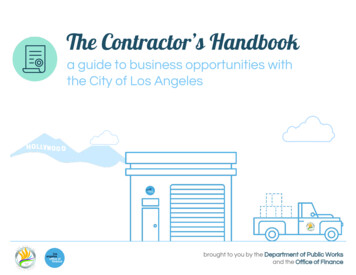
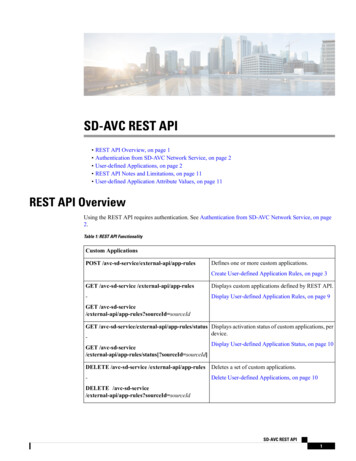
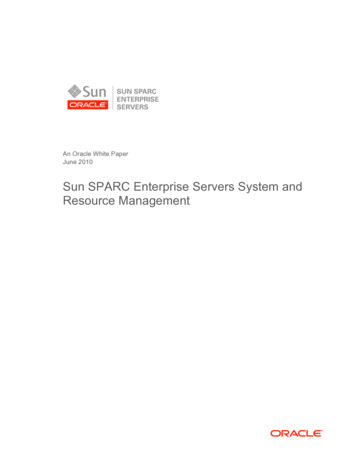
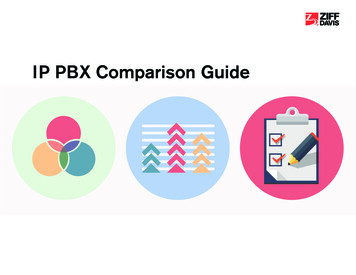
![[1]Oracle Enterprise Manager Cloud Control Basic Installation Guide .](/img/34/e22624.jpg)
